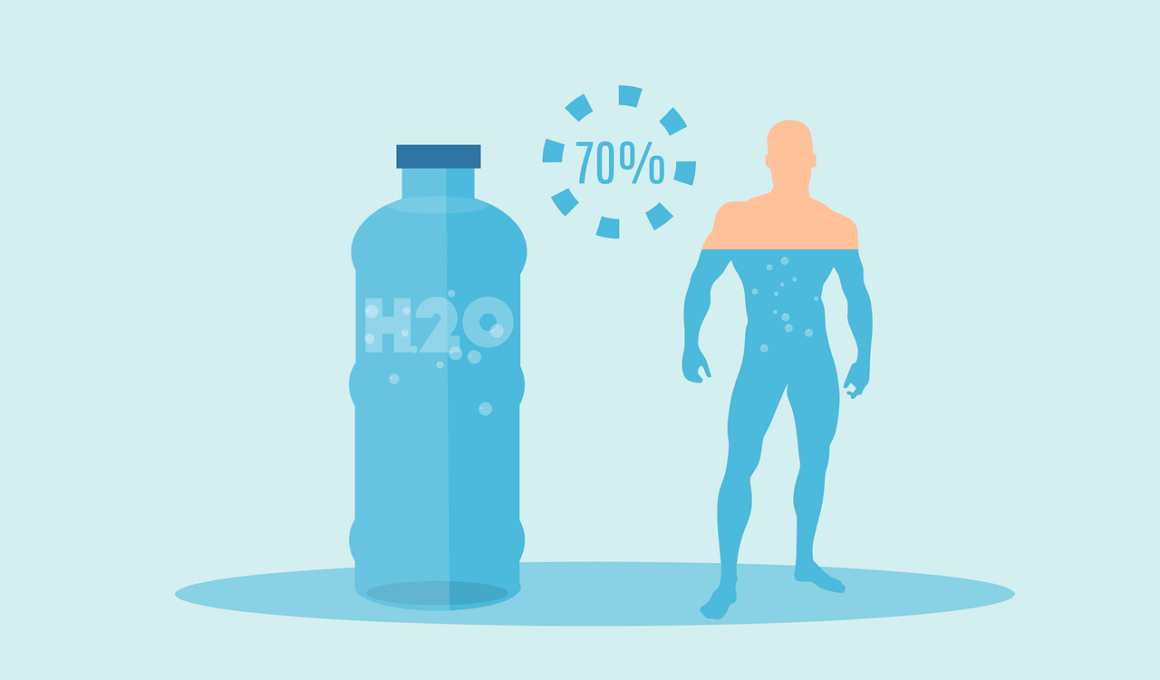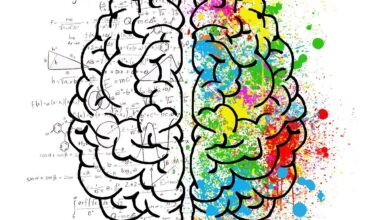Understanding Sweat Rates for Effective Hydration Planning
Hydration is crucial for athletes, especially during high-intensity workouts and competitions. Proper hydration strategies not only boost performance but also prevent overheating and dehydration. Each athlete has a unique sweat rate, influenced by various factors such as body size, exercise intensity, and environmental conditions. Understanding individual sweat rates helps in crafting effective hydration plans tailored to specific needs. Monitoring sweat loss should be part of an athlete’s regular training. In this context, athletes should weigh themselves before and after exercise to gauge fluid loss. For accurate assessment, all fluids consumed should be accounted for during workouts. It’s also essential to note the duration and intensity of exercises since higher temperatures and humidity create increased sweat production, necessitating more fluid intake. Athletes are encouraged to conduct simple tests to determine their sweat rates. They can sip fluids during training sessions and monitor changes in performance. Another strategy involves tracking urine color. Dark urine usually indicates dehydration, while light yellow suggests adequate hydration. Therefore, these methods can guide athletes in devising their hydration strategies effectively, ensuring optimal results during their sports activities.
A hydration strategy should prioritize both the quantity and quality of fluids consumed. The timing of hydration is equally important, as athletes need fluids before, during, and after workouts. A fluid intake schedule helps in maintaining hydration throughout training sessions. Proactive hydration ensures athletes don’t enter competition dehydrated, negatively affecting their performance. Specific hydration recommendations involve drinking at least 500-700 ml (17-24 oz) of water 2-3 hours before exercise. This allows adequate time for absorption and prevents discomfort during workouts. During exercise, especially lasting more than an hour, athletes should consider electrolyte-rich beverages. These drinks not only replenish lost fluids but also restore vital minerals such as sodium and potassium. For prolonged endurance events, incorporating carbohydrates within the drinks can further enhance performance and delay fatigue. After exercise, rapid recovery begins with rehydrating adequately to replace lost fluids. A post-exercise fluid intake goal of 1.5 liters per kilogram of body weight lost through sweat can be very effective. Additionally, athletes should monitor their hydration status regularly to adjust their plans according to environmental changes and training needs.
Analyzing Environmental Factors
Environmental conditions significantly impact sweat rates among athletes. High temperatures, humidity, and altitude can increase sweat loss, making proper hydration even more critical. When exercising in hot and humid conditions, proficiency in hydration becomes essential. The body’s ability to cool itself diminishes as sweat evaporates more slowly in such conditions. Athletes should prepare for these extremes by assessing comprehensive weather reports before competitions. Environmental acclimatization is similarly essential, where athletes can gradually adapt to adjustments in climatic conditions. Adjusting your hydration techniques in response to these variables can be a game changer. Awareness of the rate at which the body sweats under various circumstances can inform fluid intake strategies accordingly. Research indicates that acclimatization to heat can take up to two weeks, during which athletes’ sweat production increases. They can lose more water while exercising. This means athletes should gradually increase their fluid intake during this period. Ultimately, understanding how different weather conditions affect performance empowers athletes to develop an efficient hydration strategy, ensuring they remain at peak performance even in challenging environments.
Incorporating sports drinks into hydration strategies can significantly benefit athletes. These drinks are formulated to replenish electrolytes lost during prolonged exercise. Common electrolytes include sodium, potassium, calcium, and magnesium, vital for muscle function and nerve signaling. Substituting plain water with sports drinks during intense workouts can also improve endurance and delay fatigue. Athletes undertaking competitions should strategically plan their hydration approach to include these beverages. However, the selection of sports drinks must be based on individual taste preferences and performance needs. It is essential to read labels to avoid excessively high sugar content in some commercial drinks. Moreover, special consideration should be given to the transition from training to competition. This ensures familiarity with a specific drink to avoid gastrointestinal distress. In addition to liquid intake, athletes can benefit from hydrating their food. Consuming fruits like watermelon, oranges, and cucumbers can contribute to overall fluid intake. Therefore, combining liquid and food-based hydration can be a holistic strategy in developing an athlete’s hydration plan for optimal performance.
Individual Variability
Every athlete possesses unique sweat rates, emphasizing the importance of personalized hydration strategies. Genetics, body composition, and fitness levels play crucial roles in determining sweat rates. Research indicates that some athletes sweat more profusely than others due to physiological differences. Thus, monitoring individual sweat rates over time proves invaluable in creating effective hydration plans. Moreover, it is critical to understand that sweat rates may vary significantly from one sport to another. Endurance athletes may require more hydration than those engaging in strength training due to prolonged exertion. Awareness of these differences can drastically alter an athlete’s approach to hydration. The duration and intensity of exercise further compound this variability. Athletes undertaking high-intensity training regimes need to account for more significant fluid loss, emphasizing effective hydration strategies. Tailoring hydration plans accordingly, based on sweat assessment, environmental conditions, and physical exertion levels, can lead to improved athletic performance and quicker recovery times. Consequently, personalized hydration strategies ensure that athletes remain hydrated for peak performance and minimal fatigue, thus enhancing overall training results.
In conclusion, effective hydration planning is essential for athletes aiming for success in their sports endeavors. Understanding sweat rates allows athletes to create smart hydration strategies based on individual needs. The significance of environment, timing, and fluid quality in shaping hydration strategies cannot be understated. Athletes should integrate fluid intake schedules into their training routines, ensuring optimal hydration before, during, and after exercise. By building awareness regarding hydration requirements linked to sweat rates, athletes can improve performance and recovery. A personalized approach, considering individual sweat volume, training intensity, and conditions, leads to higher success rates. Monitoring changes in hydration status through practical methods facilitates adjustments to hydration strategies as needed. These methods can include urine color checks or tracking body mass changes. Through diligence and knowledge, athletes can optimize their hydration strategies, thereby enhancing their athletic performance significantly. Consequently, developing effective hydration planning should be a priority, paving the way for sustained athletic performance and improved overall health. With careful management of hydration, athletes position themselves for greater success in their training and competition.
Ultimately, it is critical for athletes to embrace and implement personalized hydration strategies. Engaging with sports nutrition experts or coaches can provide additional guidance in this area. They can offer insight into the best hydration practices tailored to each athlete’s specific demands and sport requirements. Educational resources about hydration can further bolster athletes’ understanding of effective strategies. Workshops or webinars on hydration can empower athletes with knowledge, allowing them to make informed decisions. Therefore, considering the role of hydration within overall training plans can be transformative. By developing individualized hydration strategies, athletes enhance their potential for enhancement in overall performance. Continuous learning is key, as new research and findings emerge within the sports industry. Staying informed about hydration tactics and best practices can give athletes a competitive edge. Furthermore, embracing technology for tracking hydration can yield valuable insights. Apps and devices can assist in monitoring fluid intake and sweat loss, fostering better hydration habits. As athletes cultivate their understanding of hydration strategies, they embrace a holistic approach ensuring both physical readiness and mental focus during competition.



